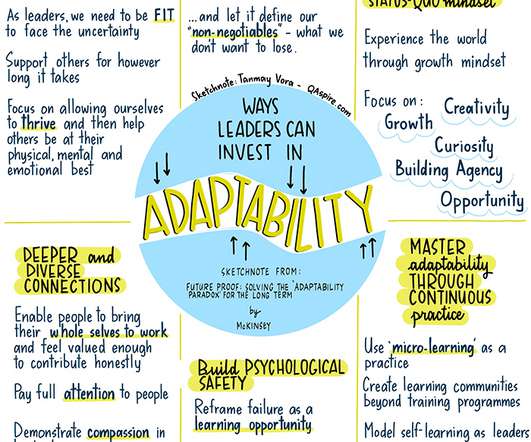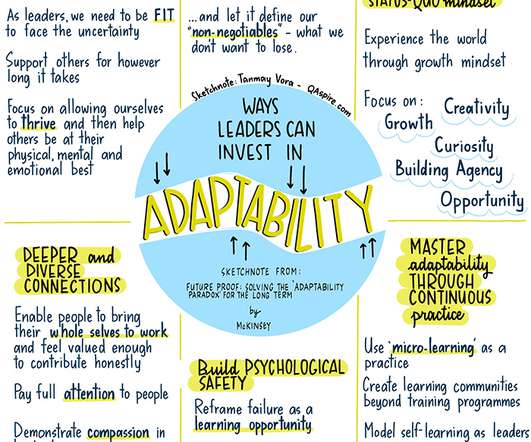Building a Culture of Adaptability
QAspire
SEPTEMBER 27, 2021
In this context, I read a fantastic article by McKinsey titled “ Future proof: Solving the ‘adaptability paradox’ for the long term ” with great interest (HT to Helen Bevan for sharing it). Authors define adaptability as: Adaptability is the ability to learn flexibly and efficiently and to apply that knowledge across situations.












Let's personalize your content